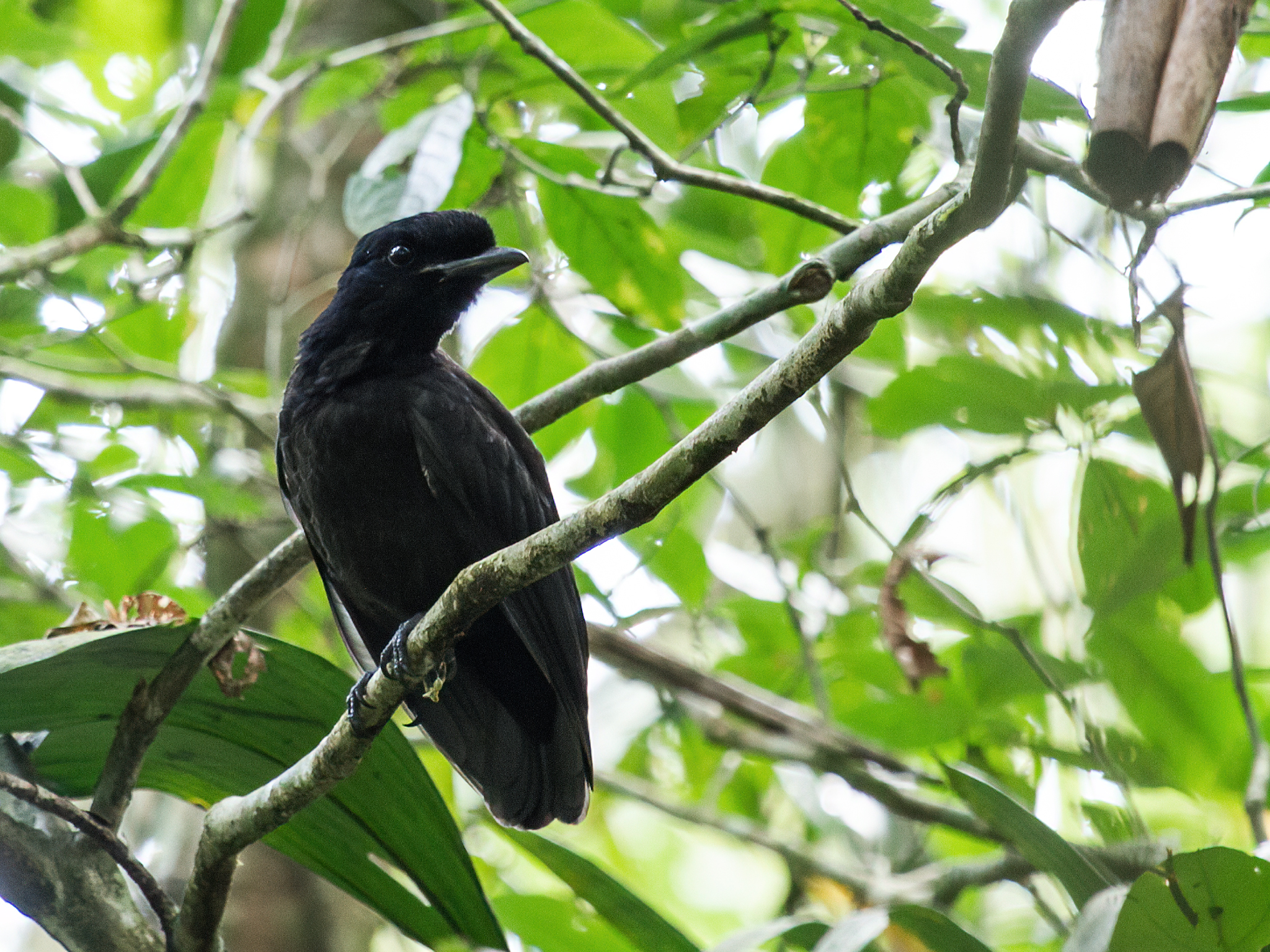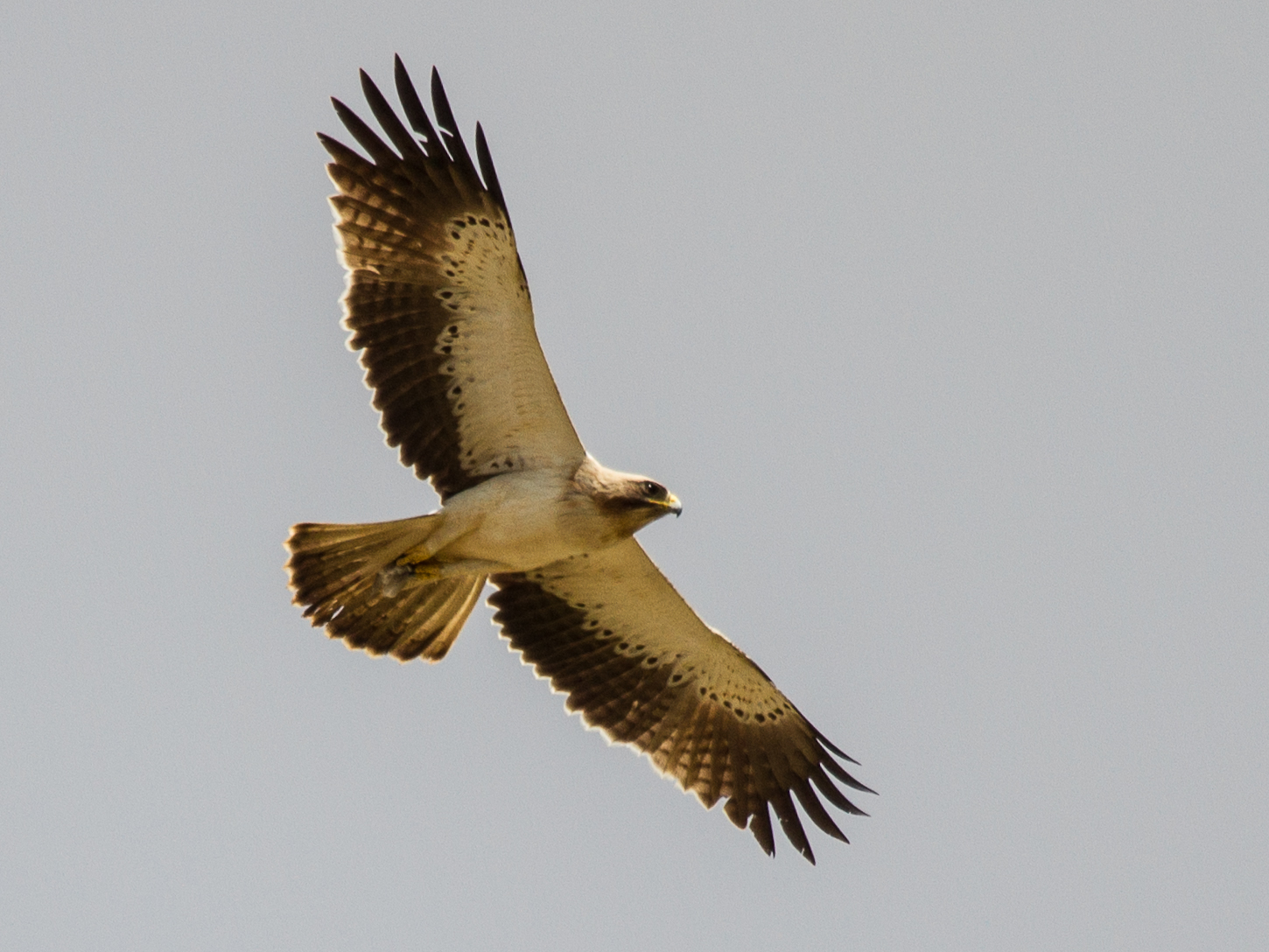|
Cephalopterus
Umbrellabird is the common name referring to three species of birds in the genus ''Cephalopterus''. They are named for their distinct umbrella-like hoods. The umbrellabird was described by Sir Alfred Wallace, a companion of Charles Darwin, in the 1800s while on an expedition to South America. Umbrellabirds face habitat loss, and two of the three species are at risk of extinction. Basic Information Umbrellabirds can be found in the rainforests of Central and South America. They are generally solitary, but known to co-inhabit areas with other birds including other umbrellabirds, and similar species such as woodpeckers. With a total length of , it is among the largest members of the cotinga family, and the male Amazonian umbrellabird is the largest passerine in South America. The typical weight of an umbrellabird ranges from , with a wingspan reaching about . Umbrellabirds are thought to live for an average of 16 years in the wild. Physiology The umbrellabird is almost en ... [...More Info...] [...Related Items...] OR: [Wikipedia] [Google] [Baidu] |
Bare-necked Umbrellabird
The bare-necked umbrellabird (''Cephalopterus glabricollis'') is a species of bird in the family Cotingidae. It is found in the Talamancan montane forests of Costa Rica and Panama. Bare-necked umbrellabirds live only in forests and their diet consists mainly of fruits. Its natural habitats are subtropical or tropical moist lowland forest and subtropical or tropical moist montane forest. It is threatened by habitat loss. Taxonomy and systematics The bare-necked umbrellabird is one of three species in the genus '' Cephalopterus'', commonly known as the umbrellabirds. It was first described by John Gould in 1851, on the basis of specimens collected by Warzewickz at elevations of in Panama. The generic name ''Cephalopterus'' comes from the Greek κεφαλη (''kephalē''), meaning head, and πτερος (''pteros''), meaning feathered, referring to the head plumes of the Amazonian umbrellabird. The specific epithet ''glabricollis'' is from the Latin ''glaber'', meaning bald, a ... [...More Info...] [...Related Items...] OR: [Wikipedia] [Google] [Baidu] |
Long-wattled Umbrellabird
The long-wattled umbrellabird (''Cephalopterus penduliger'') is an umbrellabird in the Cotingidae family. Its Spanish names include ''pájaro bolsón, pájaro toro, dungali'', and ''vaca del monte''. The long-wattled umbrellabird is considered rare and it resides in humid to wet premontane and cloud forest. They are often found on the Pacific slopes of southwest Colombia and western Ecuador, but occasionally are found at lower altitudes. Description The male is 40–42 cm in height, with the female being slightly smaller at 35–37 cm. Both sexes are short-tailed and carry an erectile head crest; those of the males are slightly longer at 20–30 cm. The male is distinguished by a large throat wattle (anatomy), wattle of feathers, while females and juveniles have no or a much smaller wattle. The length of the wattle can be controlled, and it can be retracted in flight. The male generally has black colored shafts in its feathers. The long-wattled umbrellabird's speci ... [...More Info...] [...Related Items...] OR: [Wikipedia] [Google] [Baidu] |
Amazonian Umbrellabird
The Amazonian umbrellabird (''Cephalopterus ornatus'') is a species of bird in the family Cotingidae native to the Amazon basin with a separate population on the eastern slopes of the Andes. The male bird is entirely black, with a black crest and inflatable wattle on the throat, and at , may be the largest passerine bird in South America. The female is slightly smaller. Both have an undulating flight, described as woodpecker-like, and the male has a loud, booming call. The Amazonian umbrellabird feeds on fruit and berries, and may opportunistically take insects and spiders. It forages singly, in pairs or in small groups, in the forest canopy, hopping from branch to branch, but is a secretive species and is more often heard than seen. Description Much larger than the female, the male Amazonian umbrellabird is likely the largest passerine in South America as well as the largest suboscine passerine in the world. The male Amazonian umbrellabird grows to a weight of and a length of ... [...More Info...] [...Related Items...] OR: [Wikipedia] [Google] [Baidu] |
Cotinga
The cotingas are a large family, Cotingidae, of suboscine passerine birds found in Central America and tropical South America. Cotingas are birds of forests or forest edges, that are primary frugivorous. They all have broad bills with hooked tips, rounded wings, and strong legs. They range in size from of the fiery-throated fruiteater (''Pipreola chlorolepidota'') up to of the Amazonian umbrellabird (''Cephalopterus ornatus''). Description Cotingas vary widely in social structure. There is a roughly 50/50 divide in the family between species with biparental care, and those in which the males play no part in raising the young. The purple-throated fruitcrow lives in mixed-sex groups in which one female lays an egg and the others help provide insects to the chick. In cotinga species where only the females care for the eggs and young, the males have striking courtship displays, often grouped together in leks. Such sexual selection results in the males of these species, includi ... [...More Info...] [...Related Items...] OR: [Wikipedia] [Google] [Baidu] |
Wattle (anatomy)
A wattle is a fleshy Caruncle (bird anatomy), caruncle hanging from various parts of the head or neck in several groups of birds and mammals. Caruncles in birds include those found on the face, wattles, dewlaps, Snood (anatomy), snoods, and earlobes. Wattles are generally paired structures but may occur as a single structure when it is sometimes known as a dewlap. Wattles are frequently organs of sexual dimorphism. In some birds, caruncles are erectile tissue and may or may not have a feather covering. Wattles are often such a striking Morphology (biology), morphological characteristic of animals that they feature in their common name. For example, the southern and northern cassowaries are known as the double-wattled and single-wattled cassowary, respectively, and a breed of domestic pig is known as the red wattle hog, Red Wattle. Birds Function In birds, wattles are often an ornament for courting Sexual selection, potential mates. Large wattles are correlated with high testos ... [...More Info...] [...Related Items...] OR: [Wikipedia] [Google] [Baidu] |
Central America
Central America is a subregion of North America. Its political boundaries are defined as bordering Mexico to the north, Colombia to the southeast, the Caribbean to the east, and the Pacific Ocean to the southwest. Central America is usually defined as consisting of seven countries: Belize, Costa Rica, El Salvador, Guatemala, Honduras, Nicaragua, and Panama. Within Central America is the Mesoamerican biodiversity hotspot, which extends from southern Mexico to southeastern Panama. Due to the presence of several active geologic faults and the Central America Volcanic Arc, there is a high amount of seismic activity in the region, such as volcanic eruptions and earthquakes, which has resulted in death, injury, and property damage. Most of Central America falls under the Isthmo-Colombian cultural area. Before the Spanish expedition of Christopher Columbus' voyages to the Americas, hundreds of indigenous peoples made their homes in the area. From the year 1502 onwards, Spain ... [...More Info...] [...Related Items...] OR: [Wikipedia] [Google] [Baidu] |
Pet Trade
Wildlife trade refers to the exchange of products derived from non-domesticated animals or plants usually extracted from their natural environment or raised under controlled conditions. It can involve the trade of living or dead individuals, tissues such as skins, bones or meat, or other products. Legal wildlife trade is regulated by the United Nations' Convention on International Trade in Endangered Species of Wild Fauna and Flora (CITES), which currently has 184 member countries called ''Parties''. Illegal wildlife trade is widespread and constitutes one of the major illegal economic activities, comparable to the traffic of drugs and weapons. Wildlife trade is a serious conservation problem, has a negative effect on the viability of many wildlife populations and is one of the major threats to the survival of vertebrate species. The illegal wildlife trade has been linked to the emergence and spread of new infectious diseases in humans, including emergent viruses. Global initia ... [...More Info...] [...Related Items...] OR: [Wikipedia] [Google] [Baidu] |
Palm Oil
Palm oil is an edible vegetable oil derived from the mesocarp (reddish pulp) of the fruit of oil palms. The oil is used in food manufacturing, in beauty products, and as biofuel. Palm oil accounted for about 36% of global oils produced from oil crops in 2014. Palm oils are easier to stabilize and maintain quality of flavor and consistency in ultra-processed foods, so they are frequently favored by food manufacturers. Globally, humans consumed an average of of palm oil per person in 2015. Demand has also increased for other uses, such as cosmetics and biofuels, encouraging the growth of palm oil plantations in tropical countries. The mass production of palm oil in the tropics has attracted the concern of environmental and human rights groups. The palm oil industry is a significant contributor to deforestation in the tropics where palms are grown and has been cited as a factor in social problems due to allegations of human rights violations among growers. In 2018, a repor ... [...More Info...] [...Related Items...] OR: [Wikipedia] [Google] [Baidu] |
Eagle
Eagle is the common name for the golden eagle, bald eagle, and other birds of prey in the family of the Accipitridae. Eagles belong to several groups of Genus, genera, some of which are closely related. True eagles comprise the genus ''Aquila (bird), Aquila''. Most of the 68 species of eagles are from Eurasia and Africa. Outside this area, just 14 species can be found—two in North America, nine in Central and South America, and three in Australia. Eagles are not a natural group but denote essentially any kind of bird of prey large enough to hunt sizeable (about 50 cm long or more overall) vertebrates. Etymology The word "eagle" is borrowed into English from and , both derived ultimately from ("eagle"). It is cognate with terms such as , and . It is broadly synonymous with the less common English term "erne" or "earn", deriving from , from , in which it acts as the usual word for the bird. The Old English term is turn derived from and is cognate with other synonymous ... [...More Info...] [...Related Items...] OR: [Wikipedia] [Google] [Baidu] |
Ecosystem
An ecosystem (or ecological system) is a system formed by Organism, organisms in interaction with their Biophysical environment, environment. The Biotic material, biotic and abiotic components are linked together through nutrient cycles and energy flows. Ecosystems are controlled by external and internal Environmental factor, factors. External factors—including climate—control the ecosystem's structure, but are not influenced by it. By contrast, internal factors control and are controlled by ecosystem processes; these include decomposition, the types of species present, root competition, shading, disturbance, and succession. While external factors generally determine which Resource (biology), resource inputs an ecosystem has, their availability within the ecosystem is controlled by internal factors. Ecosystems are wikt:dynamic, dynamic, subject to periodic disturbances and always in the process of recovering from past disturbances. The tendency of an ecosystem to remain clo ... [...More Info...] [...Related Items...] OR: [Wikipedia] [Google] [Baidu] |
Hawk
Hawks are birds of prey of the family Accipitridae. They are very widely distributed and are found on all continents, except Antarctica. The subfamily Accipitrinae includes goshawks, sparrowhawks, sharp-shinned hawks, and others. This subfamily are mainly woodland birds with short broad wings, long tails, and high visual acuity. They hunt by dashing suddenly from a concealed perch. In America, members of the '' Buteo'' group are also called hawks, though birds of this group are called buzzards in other parts of the world. Generally, buteos have broad wings and sturdy builds. They are relatively larger-winged and shorter-tailed than accipiters, and fly further distances in open areas. Buteos descend or pounce on their prey rather than engaging in fast, horizontal pursuit. The terms ''accipitrine hawk'' and ''buteonine hawk'' are used to distinguish between the types in regions where ''hawk'' applies to both. The term ''"true hawk"'' is sometimes used for the accipitrin ... [...More Info...] [...Related Items...] OR: [Wikipedia] [Google] [Baidu] |
French Language
French ( or ) is a Romance languages, Romance language of the Indo-European languages, Indo-European family. Like all other Romance languages, it descended from the Vulgar Latin of the Roman Empire. French evolved from Northern Old Gallo-Romance, a descendant of the Latin spoken in Northern Gaul. Its closest relatives are the other langues d'oïl—languages historically spoken in northern France and in southern Belgium, which French (Francien language, Francien) largely supplanted. It was also substratum (linguistics), influenced by native Celtic languages of Northern Roman Gaul and by the Germanic languages, Germanic Frankish language of the post-Roman Franks, Frankish invaders. As a result of French and Belgian colonialism from the 16th century onward, it was introduced to new territories in the Americas, Africa, and Asia, and numerous French-based creole languages, most notably Haitian Creole, were established. A French-speaking person or nation may be referred to as Fra ... [...More Info...] [...Related Items...] OR: [Wikipedia] [Google] [Baidu] |







